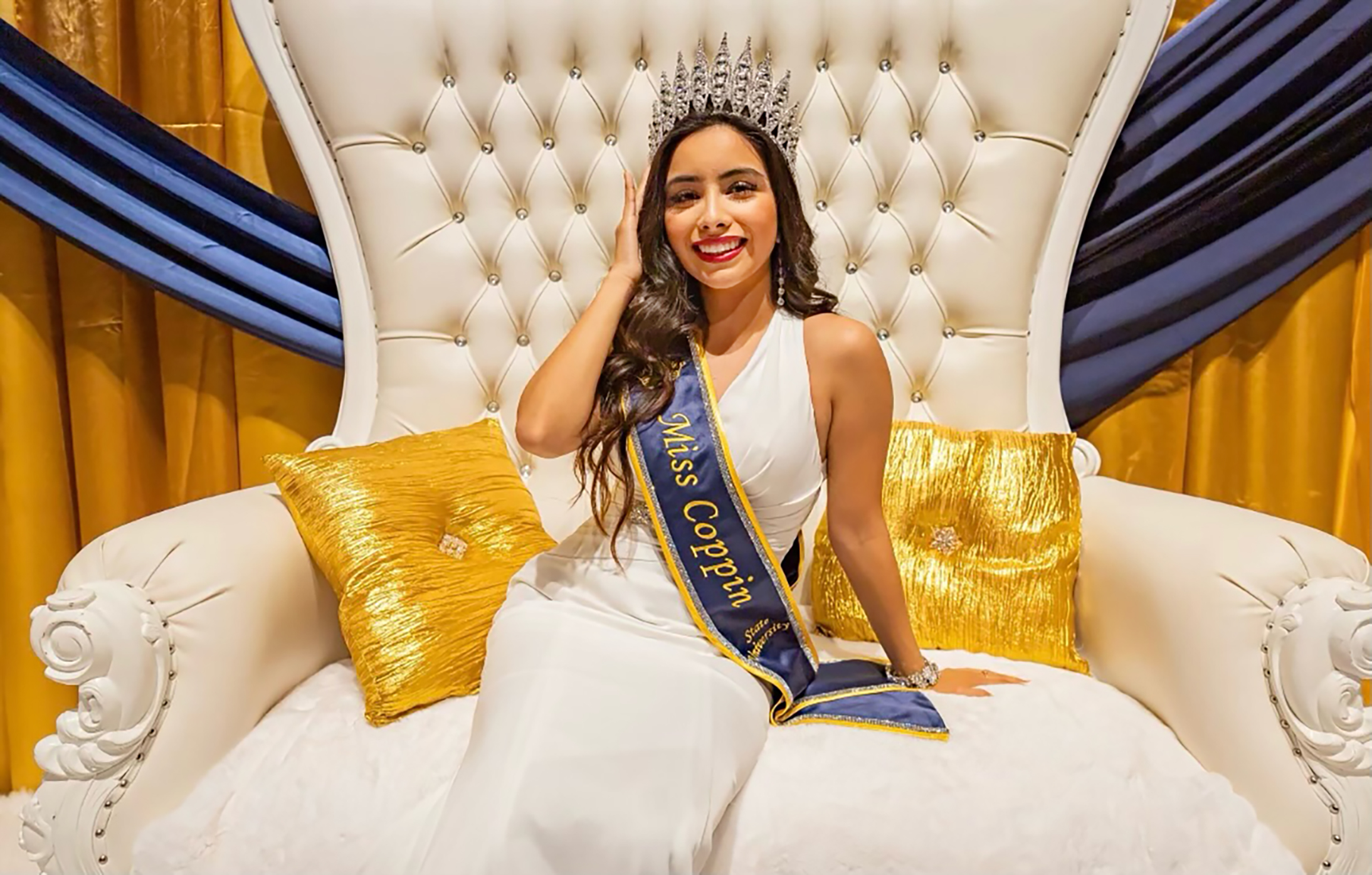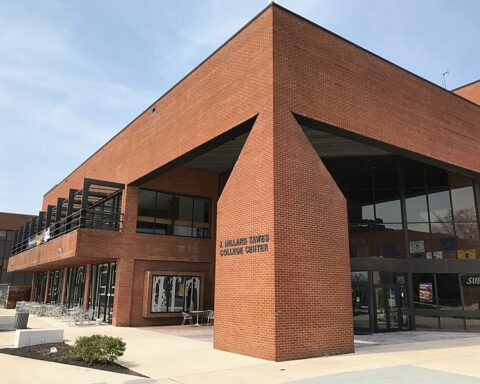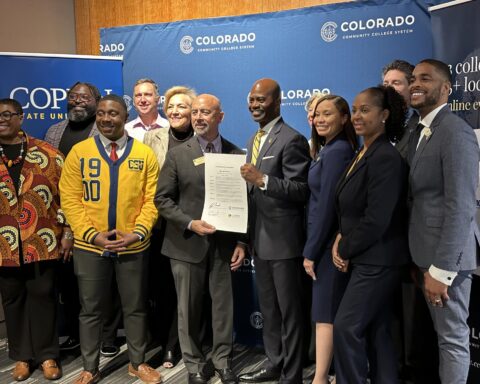By Edwin Flores
When Keylin Perez became the first Latina to be crowned Miss Coppin State University in Baltimore, she was thrilled. She had been named the university’s Miss Sophomore and Miss Junior previously and was eager to continue representing the school with pride as the 91st Miss Coppin State University queen.
But after a TikTok video she posted went viral, she received backlash, including harassment, from online critics who said the role should be given to a Black woman, since Coppin State University is a historically Black university, known as an HBCU.
“I never considered stepping down,” Perez told NBC News. She applied for the high-profile role knowing she might face some backlash, but ran unopposed and was officially crowned in October. “I stayed firm in my decision of continuing to serve my institution that has poured so much into me the past four years,” she said.
The original TikTok video featured Perez and Mister Coppin State and their Royal Court counterparts at Morgan State University, another HBCU in Baltimore, recreating a scene from the Zoolander movie, which was a trending meme at the time on the platform. The group recorded the lighthearted video while at Mister HBCU Kings’ Leadership Conference and Competition, Inc., held in St. Louis.
The video has since gathered more than 430,000 views, more than 78,000 likes and had more than 2,700 comments before Perez turned off the comment section because of the barrage of hateful messages.
Dozens of videos and posts on other platforms such as Instagram and Twitter also surfaced, raising larger questions of representation, race and legacy, and debating whether a non-Black person being crowned contradicts HBCU culture.
Perez, who turns 23 on Saturday, said the backlash online escalated as some of the comments turned vulgar, with some even suggesting she harms herself.
Perez took to Instagram to address the controversy and issued a statement. The post received more than 1,000 comments with divided opinions.
“They’re going to have to start removing ‘Black’ in titles now,” one commenter said, while another said, “The majority supports and stands with you. You’re doing amazing sweetheart. Continue serving your campus with grace.”
Kelaina Slaughter, 20, a junior majoring in English at the University of Louisville in Kentucky, first learned about the controversy surrounding Perez from a different TikTok video.
Slaughter explained why she thinks a role like Miss Coppin State University should go to a Black person.
She said roles like the Royal Court positions at HBCUs are crucial in representing students who have been historically underserved at predominantly white institutions.
“The reason why these people are so important for them to be Black is so that they can have Black voices in spaces where they were historically not allowed. They’re trying to show that we are educated, that we can hold these positions, that we can have the same thing as white people — anybody else,” Slaughter said.
“When you take those spaces away, you are taking away an additional voice for our community that you can have on a national space and allow to represent our community as a whole,” Slaughter continued.
Yet Perez says she’s received support from peers, professors and university administrators.
Perez noted that the controversy is a stark contrast from her time as Miss Sophomore and Miss Junior. She didn’t receive any backlash then, she said.
Justin Evans, 23, president of Coppin’s student government association, said Perez “has our full support.”
“I feel like it’s bonded us together even more than before, because we’re already a small institution, so all this backlash,” he said, “just helps us realize how we’re all we got in a sense. The campus life has actually been up.”
Evans, who is Black and Mexican American, said Perez has been one of the more impactful queens the school has had yet. He also said Perez has been featured throughout campus and on the school’s website since her time as Miss Sophomore and Miss Junior.
Jawaad Williams, 20, who is Mister Junior at Coppin, said about the controversy: “I think sometimes people just get wrapped up in the idea, like an HBCU is just Black people only and nobody else is allowed to go to the school.”
Before the social media backlash, nobody on campus questioned Perez’s crowning, Williams said, because “we all feel like she deserved the spot that she’s in.”
“She goes above and beyond. She doesn’t just wear the crown and take pictures. She actually goes in the Baltimore community and does work. She does work on campus. So she’s very active in her role,” he said.
Queens from other HBCUs also posted a video and statement in support of Perez.
Other HBCUs in the past have faced similar backlash for electing non-Black queens, including Kentucky State University.
Historically Black — but becoming more diverse
HBCUs are defined as institutions founded before 1964 with the specific mission of educating Black students amid the realities of legal segregation. But in recent years, growing populations and changing demographics have impacted student composition. Non-Black students accounted for 25% of enrollment at HBCUs in 2021, compared to 15% in 1976, according to the National Center for Education Statistics.
Coppin State University President Anthony Jenkins addressed the issue of a multicultural campus in a video statement online denouncing the “racist, hurtful and unintelligent comments made by several people” in response to the backlash against Perez.
“We are a proud HBCU that educates a multicultural and multigenerational student population. Thus, we value diversity and inclusion. As such, we do not buy into the myth that students who represent our HBCU must be African American,” Jenkins said. “We’re not going to allow irrelevant haters to make our queen feel as if she does not belong, or that she is not worthy to represent our beloved institution.”
Perez, who is of Guatemalan descent, attended public high school in Glenelg, Maryland. “I never really felt like I fit it in, knowing that there was just less than five students who are Latino and less than 20 students who are Black and the rest were Caucasian,” Perez said.
She said she was drawn to Coppin State for its smaller classroom size ratios and its diverse student population. Coppin State’s student body is 80% Black, 3.1% Hispanic or Latino and 1.7% white.
“When I came to Coppin, I truly felt welcomed,” Perez said. “They pushed me, they inspired me and I felt like when I came to their orientations, I found everything that I’ve always wanted in a university.”
Perez is a senior expected to graduate in May as a nursing and military science major. She also serves as a sergeant in the U.S. Army Reserves and plans to become a psychiatric nurse practitioner within the military.
For Latinos interested in attending an HBCU, Perez said she recommends the schools and advises prospective students to take an orientation tour to learn more.
Ashley Román, 21, a student athlete on the Coppin women’s volleyball team majoring in biology pre-med, is from Isabela, Puerto Rico. Choosing to attend an HBCU, she said, has been one of her best experiences.
“Here, I’ve always, always, always felt comfortable enough to call this my second home,” Román said. “Just because it’s an HBCU, they don’t exclude students because of their race and they always involve everyone.”





